Point Sports Therapy Clinic
digital
INJURY DATA
FRACTURE
A fracture is the medical term for a break in the bone, it is mainly caused by trauma to the area. This is commonly seen in the hand, knee, ankle, foot, elbow, forearm, head, shoulder, chest and ribs in athletes.
Average recovery time -
6 to 12 weeks
Likelihood of reoccurrence -
Medium to high
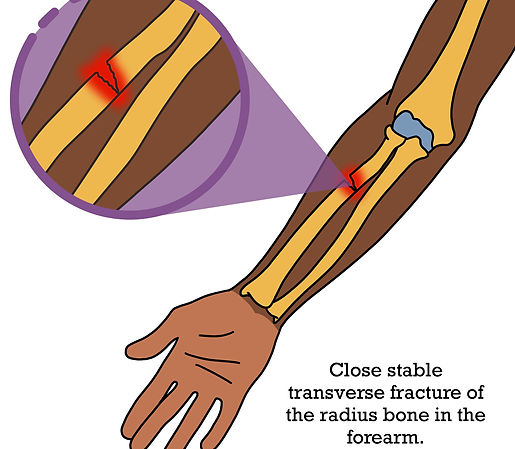
Digital illustration of a clavicle fracture generated by EVE.

A fracture is the medical name for a break in a bone and it is an extremely common injury. It is generally caused by trauma such as a fall, twist or direct impact, however, it can also be caused by repetitive stress (this would cause a small crack instead of a full break) or osteoporosis which is brittle bones.
Fractures are more common in children as their bones have not yet hardened and matured.
There are different types of fractures, dependent on the force applied to the bone and the age of the individual. Below are some different types:
Open or Closed
An open fracture is where the bone punctures the skin, this is also called a compound fracture. It is still called an open fracture if the bone goes back inside the body. Closed fractures are more common than open fractures and are when the bone does not puncture the skin.
Comminuted or Stable
A comminuted fracture is when the bone shatters into many different pieces and a stable fracture is when the bones do not move out of place.
Oblique or Transverse
An oblique fracture is when the fracture is at an angle, usually diagonal, and it occurs opposite to a bones long axis. A transverse fracture is when the fracture line is straight across the bone.
Greenstick
These only occur in children and is when the bone is bent but not broken all the way.
Buckle
This is where two bones are compressed into each other and only occurs in children.
Growth Plate
When the ends of the bones are still growing in children and they are fractured it is called a growth plate fracture and it may cause the bone to end up shorter in length.
Common fractures in sports are...
Calcaneus - in the foot/ankle
Pott's fracture - in the ankle
Jones fracture - in the fifth metatarsal in the foot
Lisfrac’s fracture - in the foot
Tibial growth plate - in the lower leg
Tibial osteochondral - in the lower leg
Osteochondral - in the knee
Tibial plateau - in the knee/upper shin
Compression fracture of the spine
Finger
Olecranon- in the elbow
Rolando fracture - in the thumb
Bennett's fracture - in the thumb
Clavicle
Sternum - in the chest
Head
Boxer's fracture - in the fifth metacarpal (little finger)
Signs & SYMPTOMs

Pain in the affected area
Swelling
Bruising
Tenderness
Snap or grinding sound at the time of injury
Visible deformity
Numbness or tingling
Pain that increases with pressure or movement
Inability to weight bear on the affected joint
Loss of function of the affected area
Passing out at time of injury due to the pain
Dizziness and shock
If you believe you have symptoms of a fracture please seek guidance from a medical professional! - EVE
Additional illustrations.
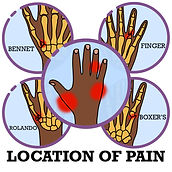
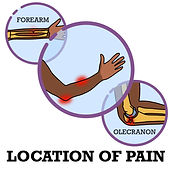
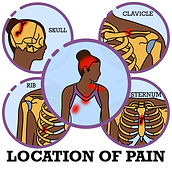
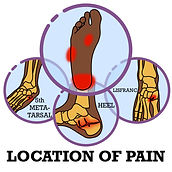



Above shows an expected VAS (pain) score for this injury as calculated by EVE.
sports
This injury is commonly seen in sports such as...
- Rugby
- Basketball
- Handball
- Football
-American football
- Netball
- Gymnastics
- Tennis
- Weightlifting
- Volleyball
- Cricket
- Softball
- Mixed martial arts
- Snowboarding
- Cheerleading
- Formula 1 driving
- Boxing
- Badminton
- Baseball
- Field hockey
- Cycling
- Ballet
- Wrestling
- Skating (Roller, ice, board)








treatment & prevention
Follow these steps to treat this injury....









Extra information
Ice is most effective within the first 72 hours of injury; however, it may slow down initial healing.
Get in touch with a sports therapist to assist with your injury rehabilitation journey.
Stay tuned for our upcoming therapist database!
Reach the starting point of your recovery by purchasing the complete injury rehabilitation package at the Self-Help Shop!
Follow these steps to prevent this injury....
DOs
Eat a nutritious diet – high in calcium and vitamin D, use supplements if needed
Regularly check your protective equipment before participating in sports
Ensure a gradual return to sport following an injury
Warm up throughly before commencing any exercise and cool down completely after engaging in vigorous activities
Use proper technique while engaging in sports - consider having someone observe you to remind you
Use sports equipment properly and in accordance with its intended purpose
Try to achieve and sustain a healthy body weight
Incorporate regular breaks in activities that put significant strain in the area
Pain usually stops before the injured area is strong enough to handle daily activities so it is important to be careful after treatment
Visit EVE's Top Tips to prevent injury page!
(link below)
DON'Ts
Restrict your sporting activities until fully healed
Do not ignore your pain/symptoms! Address them promptly for a better recovery
Minimise strenuous use and repetitive movements of the affected area - take regular breaks if unavoidable
Avoid increasing your activity levels too rapidly
Avoid playing sports if you are already fatigued
Refrain from doing high impact activities for prolonged periods
Visit EVE's Top Tips to prevent injury page!
(link below)

The information provided is not intended to be a substitute for medical advice, diagnosis or treatment.
